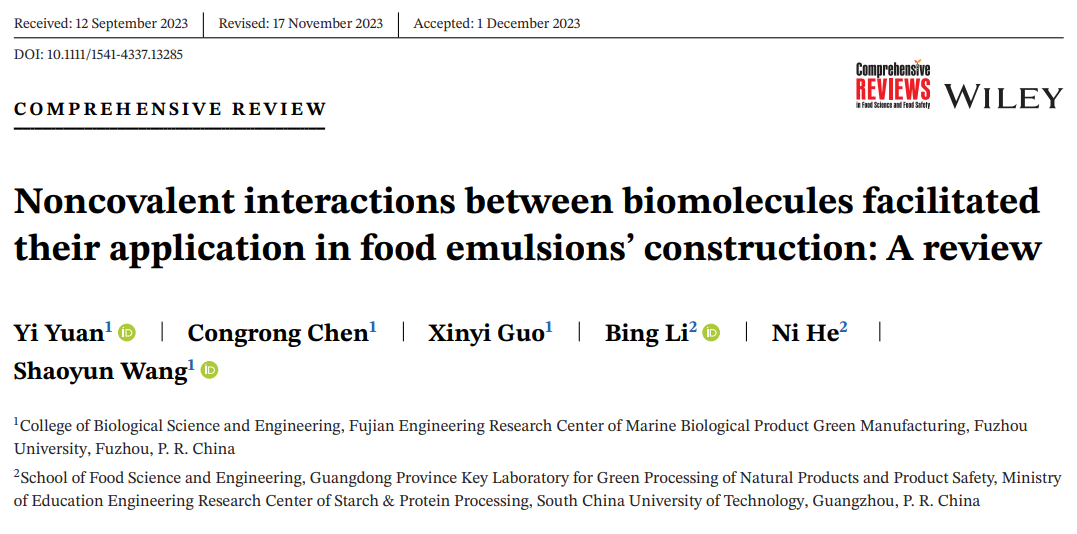由于生物分子具有無毒、無害、可食用和生物相容性等優(yōu)點(diǎn),在食品乳液生產(chǎn)中使用蛋白質(zhì)、多糖、皂苷和磷脂等生物分子代替合成乳化劑引起了食品科學(xué)家的極大興趣。然而,使用單一生物分子并不總能滿足食品乳液應(yīng)用的實(shí)際需求。因此,生物分子通常需要修飾才能獲得理想的界面特性。其中,生物分子之間的非共價(jià)相互作用代表了一種很有前途的物理修飾方法,可以調(diào)節(jié)其界面性質(zhì),而不會(huì)引起與新化學(xué)鍵形成相關(guān)的健康風(fēng)險(xiǎn)。靜電相互作用、疏水相互作用和氫鍵是常見的非共價(jià)相互作用,可促進(jìn)生物分子在食品乳液中的有效應(yīng)用。這些相互作用對(duì)生物分子基食品乳液的物理穩(wěn)定性、氧化穩(wěn)定性、消化率、遞送特性、響應(yīng)靈敏度和可印刷性產(chǎn)生了積極影響。然而,利用生物分子之間的非共價(jià)相互作用來促進(jìn)它們?cè)谑称啡橐褐械膽?yīng)用仍然存在需要進(jìn)一步改進(jìn)的局限性。
福州大學(xué)汪少蕓教授、袁毅副教授等人在Comprehensive Reviews in Food Science and Food Safety 發(fā)表了標(biāo)題為“Noncovalent interactions between biomolecules facilitated their application in food emulsions’ construction: A review”的文章,綜述了常見的生物分子乳化劑、生物分子間非共價(jià)相互作用對(duì)不同生物分子基乳液構(gòu)建的促進(jìn)作用和對(duì)乳液性能的積極影響,以及它們?cè)谏锓肿尤橐簶?gòu)建中的局限性和前景。總之,未來食品乳液的設(shè)計(jì)和開發(fā)將越來越依賴于生物分子之間的非共價(jià)相互作用。然而,為了充分利用這些相互作用來構(gòu)建基于生物分子的乳液,還需要投入更多的工作。

專家介紹

1College of Biological Science and Engineering, Fujian Engineering Research Center of Marine Biological Product Green Manufacturing, FuzhouUniversity, Fuzhou, P. R. China
Abstract:
Yuan, Y., Chen, C., Guo,X., Li, B., He, N., & Wang, S. (2024). Noncovalentinteractions between biomolecules facilitated theirapplication in food emulsions’ construction: Areview. Comprehensive Reviews in Food Science andFood Safety, 23, 1–23.
 電話: 010-87293157
電話: 010-87293157
 地址: 北京市豐臺(tái)區(qū)洋橋70號(hào)
地址: 北京市豐臺(tái)區(qū)洋橋70號(hào)
版權(quán)所有 @ 2023 中國食品雜志社 京公網(wǎng)安備11010602060050號(hào) 京ICP備14033398號(hào)-2